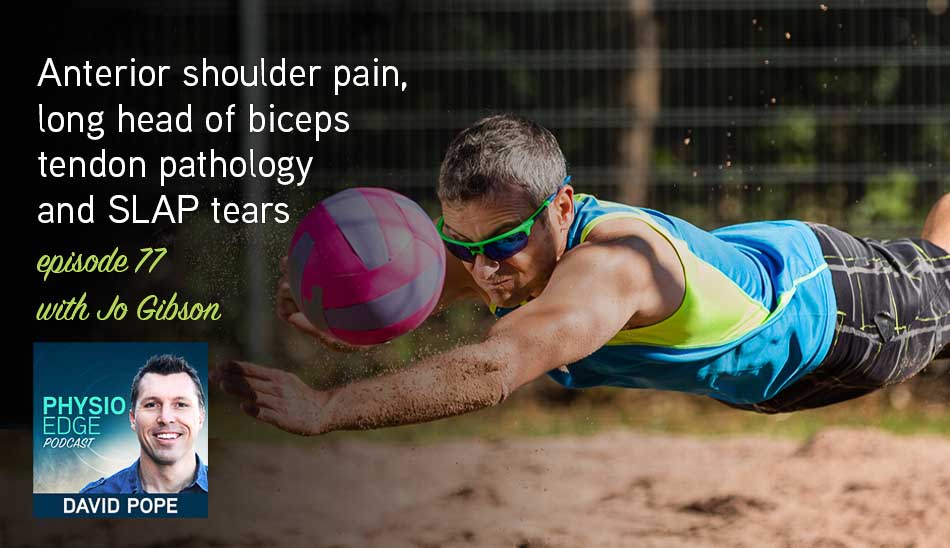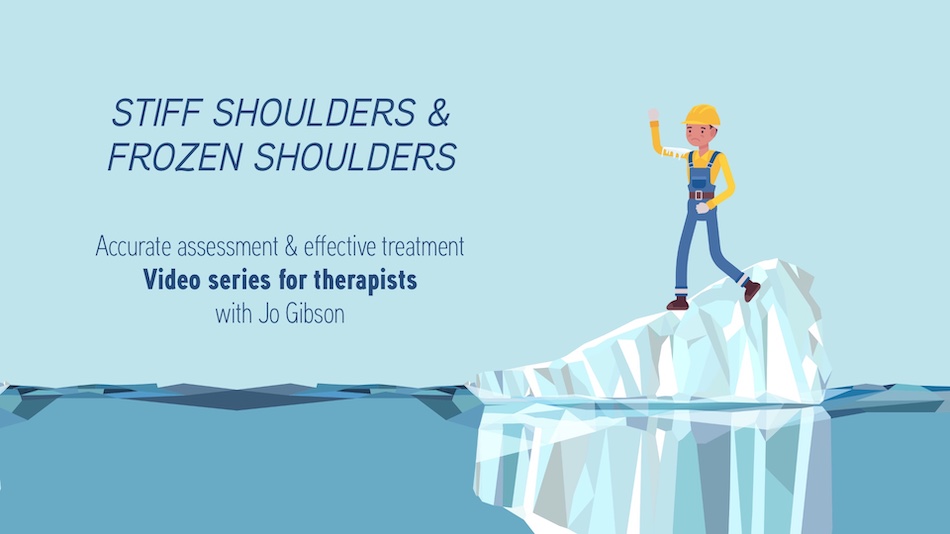
The long head of biceps tendon and superior labrum can get a hard time in throwing athletes and patients that fall on their arm or shoulder. This can result in long head of biceps tendon pathology or SLAP tears, and cause ongoing shoulder pain.
A lot of our shoulder tests are non-specific, and are unable to identify particular structures that are irritated or painful in the shoulder. In the case of the long head of biceps (LHB) tendon and slap tears, there are a few useful tests that in combination with a good history can help you identify when the structures are involved in your patient's shoulder pain.
In episode 77 of the Physio Edge podcast, Jo Gibson, Shoulder Specialist Physio and David Pope discuss anterior shoulder pain, LHB pathology and SLAP tears. You will discover:
- Anatomy of the long head of biceps tendon and superior labrum
- Why the anatomy is important, and may be different to what you learnt at university around the biceps tendon and bicipital groove
- The clinical presentation and relevant history of patients with SLAP lesions and LHB tendon pathology
- Which patients are more likely to get SLAP tears following trauma
- Special tests that may help you identify LHB pathology and SLAP tears
- What information imaging gives us
- When to request imaging for your shoulder pain patients
- Different groups of patients that develop LHB pathology
- Rehabilitation of LHB tendon pathology and SLAP tears
- When to specifically target the LHB tendon, and when to target the surrounding structures for best results
- Other areas to consider in your rehab beyond the shoulder
- How the kinetic chain can impact shoulder pain
- How someone's hop distance can influence their shoulder pain
- How to start treatment of someone with an irritable LHB tendon
- Important education components to include in your treatment
- Time frames - How long do these injuries take to recover?
- Which patients are suitable for surgical management?
- Different types of surgery for LHB tendon pathology
- Which SLAP tear patients should have conservative treatment?
- How suprascapular nerve involvement can present following traumatic shoulder injury, and how to identify patients with suprascapular nerve compression
Podcast handout
Free video series “Frozen shoulder assessment & treatment” with Jo Gibson
Shoulder: Steps to Success online course with Jo Gibson
Improve your assessment and treatment of shoulder pain with the Shoulder: Steps to Success online course with Jo Gibson, now available for enrolment at clinicaledge.co/shouldersuccess
Links associated with this episode:
- Get your access to the free video series “Frozen shoulder assessment & treatment” with Jo Gibson
- Improve your shoulder assessment & treatment with the Shoulder: Steps to Success online course with Jo Gibson
- Jo Gibson on Twitter - @ShoulderGeek1
- Let David Pope know what you liked about this podcast on Twitter
- Review the podcast on iTunes
- Like the podcast on Facebook
- Infographics by Clinical Edge
Articles associated with this episode:
- Download the podcast handout to receive the articles associated with this podcast.
- Hendy et al. 2012. Cross education and immobilisation: mechanisms and implications for injury rehabilitation
- Kibler et al. 2009. Clinical utility of traditional and new tests in the diagnosis of biceps tendon injuries and superior labrum anterior and posterior lesions in the shoulder
- McCreesh et al. 2017. Increased supraspinatus tendon thickness following fatigue loading in rotator cuff tendinopathy: potential implications for exercise therapy
- Parle et al. 2017. Acute rotator cuff tendinopathy: does ice, low load isometric exercise, or a combination of the two produce an analgaesic effect?
- Saithna et al. 2016. Shoulder Arthroscopy Does Not Adequately Visualize Pathology of the Long Head of Biceps Tendon
- Schroder et al. 2017. Sham surgery versus labral repair or biceps tenodesis for type II SLAP lesions of the shoulder: a three-armed randomised clinical trial
- Taylor et al. 2017. The "3-Pack" Examination Is Critical for Comprehensive Evaluation of the Biceps-Labrum Complex and the Bicipital Tunnel: A Prospective Study





